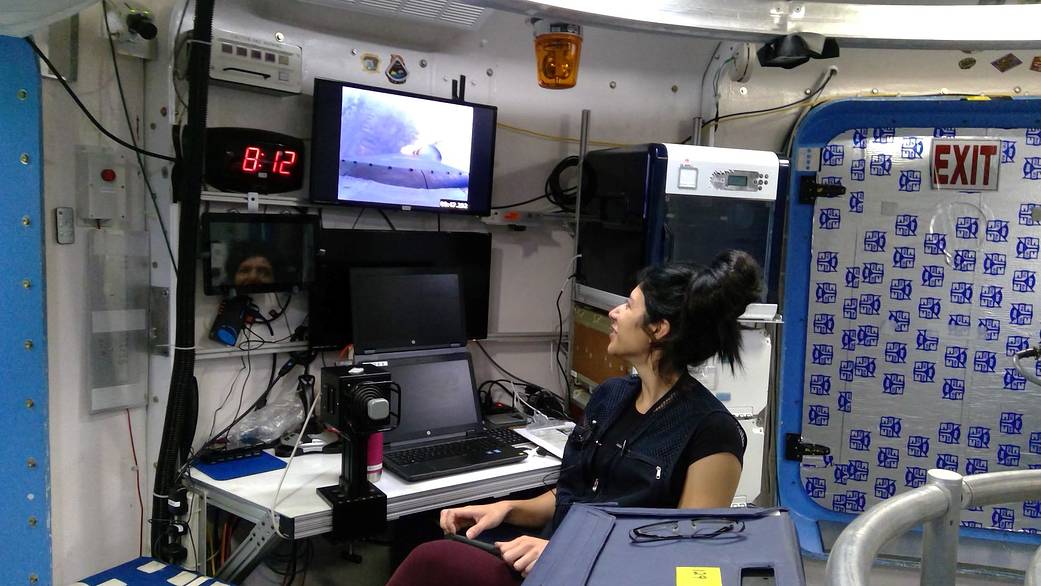After stepping inside NASA’s Human Exploration Research Analog, or HERA, crew member Monique Garcia watches the spacecraft “launch” on a computer monitor during a simulated mission to deep space. At this moment, the crew is about to leave Earth and begin the journey to Mars’ moon Phobos. The monitor above acts as both HERA’s back window and an external video feed from NASA, offering crew members a glimpse into the virtual reality “outside” the mockup spacecraft from launch to landing.
Throughout HERA’s 45-day missions, crews can peer through one of two windows: one looking back and one looking ahead. For instance, as crews approach Phobos, the Sun and Earth can be seen getting smaller from the back window, while the front window shows Mars and Phobos getting larger in its field of view.
Credit: NASA
____
NASA’s Human Research Program, or HRP, pursues the best methods and technologies to support safe, productive human space travel. Through science conducted in laboratories, ground-based analogs, and the International Space Station, HRP scrutinizes how spaceflight affects human bodies and behaviors. Such research drives HRP’s quest to innovate ways that keep astronauts healthy and mission-ready as space travel expands to the Moon, Mars, and beyond.
Nathan Cranford
Jennifer TurnerNASA Human Research Program Strategic Communications



























